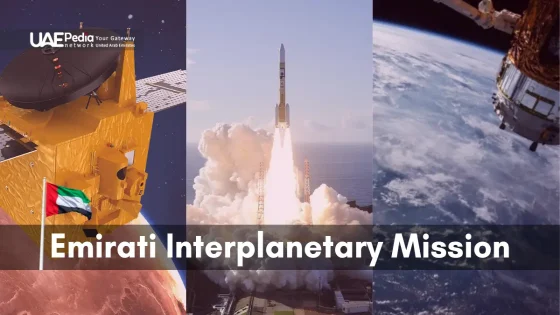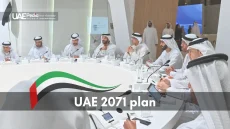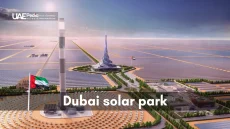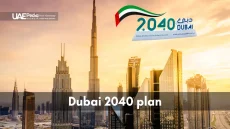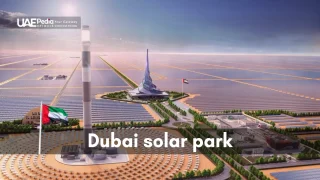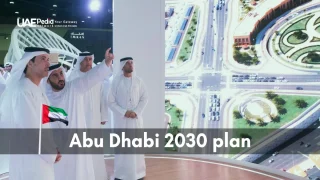Space travel is getting more exciting. From 1997 to 2023, Mars missions grew from 2 to 10. The United Arab Emirates is leading with its Emirati Interplanetary Mission in 2028.
This mission will explore the asteroid belt. It will visit seven asteroids and meet Justitia. What will they find on this journey The UAE’s space program is very inspiring. It encourages young people to explore the universe.
Overview of UAE’s Space Exploration Journey
The UAE Space Agency has made big steps in space since it started. It has launched satellites and sent probes to Mars. This shows how fast the UAE is growing in space tech and research.
UAE Space Agency’s 10th Anniversary Achievements
The UAE Space Agency has done a lot in 10 years. It sent the Hope orbiter to Mars, the first from an Arab nation. This shows UAE’s big role in space science and opens up new areas to explore.
Evolution from Emirates Mars Mission to Asteroid Belt
After the Hope orbiter’s success, the UAE is looking at new places. It plans to visit seven asteroids, with Justitia being the last one. This shows UAE’s big plans for space.
Strategic Goals and National Vision
The UAE’s space program is part of its big plans. It wants to grow its space missions by 50% made in the UAE. This helps new ideas and supports both big and small space companies.
| Milestone | Year | Significance |
|---|---|---|
| DubaiSat-1 Launch | 2006 | UAE’s first satellite |
| UAE Space Agency Establishment | 2014 | National space program initiation |
| Hope Probe Launch | 2020 | First Arab interplanetary mission |
| Asteroid Belt Mission Announcement | 2023 | Next phase of space exploration |
The UAE’s space journey shows its dedication to science and working with others. It has 10 satellites up and 8 more coming. This inspires young Emirati scientists and engineers.
Emirati Interplanetary Mission: Targets and Objectives

The UAE is getting ready for a big space adventure in 2028. The Emirati Interplanetary Mission 2028 will explore the asteroid belt. This is a big step after the success of the Emirates Mars Mission.
This mission plans to visit seven different asteroids. Each one will teach us something new about the early solar system. The main goal is to learn from Justitia, a special asteroid.
Exploring the asteroid belt is a big part of this mission. Scientists want to know more about the asteroids’ makeup and where they came from. This will help us understand how planets were formed.
- Study seven distinct asteroids in the main belt
- Gather data on asteroid composition and origins
- Investigate Justitia, a unique asteroid target
- Advance understanding of planetary formation processes
The Emirati Interplanetary Mission 2028 is not just for science. It shows the UAE’s growing skills in space travel. This mission is a big step for the UAE in space research.
Mission Architecture and Technical Specifications
The UAE’s space program is making big strides in aerospace. The Emirati Interplanetary Mission 2028 is a big step forward. It shows great progress in spacecraft design and what they can do.
Spacecraft Design and Capabilities
The mission has a main spacecraft and a lander/impactor part. This design shows the UAE’s goal to explore space more. The spacecraft uses new technologies to travel through the asteroid belt.
Advanced Payload Systems
The spacecraft has top-notch payload systems. This shows the UAE’s work in space technology. These systems come from international partners, making the mission better.
| Payload System | Function | Origin |
|---|---|---|
| Ultraviolet Spectrometer | Analyze asteroid composition | UAE-developed |
| High-Resolution Camera | Capture detailed images | Italian Space Agency |
| Magnetometer | Measure magnetic fields | UAE-US collaboration |
Lander/Impactor Technology Development
The mission has a special part called the lander/impactor. It was meant to land safely but became an impactor instead. This change is a challenge but also a chance for the UAE’s space industry to grow.
The mission focuses on new ideas, with 50% of work done in the UAE. This helps the national space sector grow. It also shows the UAE’s role in advanced aerospace technology.
International Collaborations and Partnerships
The UAE’s space program works well with other countries. The Emirati Interplanetary Mission 2028 shows this. It will take 13 years to complete, with six for making the spacecraft and seven for exploring.
Italian Space Agency Contributions
The Italian Space Agency helps a lot with this mission. They bring skills for making better payload systems and landers. This shows how the UAE uses global help to grow its space program.
US University Partnerships
Sharing knowledge in space tech is key. The UAE works with US universities like the University of Colorado Boulder. This helps the UAE grow fast in space tech and science.
Global Knowledge Transfer Initiatives
The UAE Space Agency had a big workshop called ‘Space Means Business’. Over 200 people from around the world came. This shows the UAE wants to help grow space exploration worldwide.
Half of the mission’s work goes to private companies. This makes the UAE’s space economy strong. It helps the UAE become important in the global space world.
Scientific Research and Data Collection Goals
The Emirati Interplanetary Mission aims to learn more about the asteroid belt. It’s a big project for UAE’s space science. It will gather important data to solve the mysteries of our solar system’s start.
Asteroid research is key in this mission. Scientists want to know about asteroids’ makeup, shape, and where they come from. This info helps us understand how planets formed and the early solar system.
The mission looks at different asteroids to learn more. The UAE Space Agency will share all data. This helps scientists worldwide work together.
| Mission Component | Data Collection Focus | Scientific Objective |
|---|---|---|
| Emirates Exploration Imager (EXI) | High-resolution imagery | Surface mapping and composition analysis |
| Emirates Mars Ultraviolet Spectrometer (EMUS) | Atmospheric composition | Study of asteroid outgassing and thin atmospheres |
| Emirates Mars Infrared Spectrometer (EMIRS) | Thermal emissions | Analysis of asteroid surface properties and temperature variations |
UAE’s space missions do more than study asteroids. The Hope Probe has flown by Deimos and gathered lots of Mars data. These achievements help us understand Mars and its moons better. They show UAE’s big role in space science.
Economic and Educational Impact on UAE
The UAE’s space efforts are boosting the economy and education. The country aims high for its future. The space sector is key in innovation and diversification.
Development of National Space Industry
The UAE’s space industry is growing fast. It wants to double its GDP to AED 3 trillion by 2031. The space sector is creating jobs and pushing for new tech.
Capacity Building and Talent Development
The UAE’s space projects are making a big difference in education. The Human Development Index has gone up by 25.1%. This shows better life expectancy and education. It’s helping to build a skilled workforce for the space industry.
Space Economy Growth Projections
The UAE’s space efforts are bringing in big economic gains. The country aims to increase non-oil exports to AED 800 billion. It also wants tourism to add AED 450 billion to GDP by 2031. These goals show how space is helping diversify the economy.
| Economic Indicator | Target Value | Target Year |
|---|---|---|
| GDP | AED 3 trillion | 2031 |
| Non-oil Exports | AED 800 billion | 2031 |
| Tourism Contribution to GDP | AED 450 billion | 2031 |
The UAE is all in on space exploration. It’s sending the Mars Hope Probe and plans to have a human settlement on Mars by 2117. These efforts are not just for space. They’re also boosting the economy and inspiring the next generation of scientists and engineers.
Conclusion
The Emirati Interplanetary Mission 2028 is moved from Mars to explore the asteroid belt. This shows great progress in space.
This mission does more than just explore. It also helps the economy and education. It’s a big win for the UAE.
The UAE wants to be a big name in space. It’s working hard with its space strategy. The UAE Analog Program is a big part of this.
This program will study space-like conditions on Earth. Emirati crew members will live in a special habitat. They will learn a lot.
After 2028, the UAE is ready for more. It’s working with universities on important research. This includes studying glucose and body changes.
This shows the UAE is serious about science. It’s going to be a big player in space. The UAE’s future in space looks very bright.
